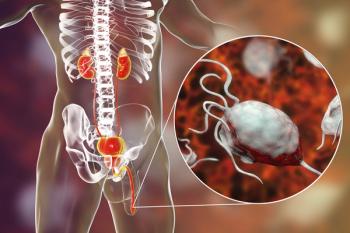
ASCO GU: Adjuvant Radiotherapy Post Prostatectomy Still Safe at 10 Years
The use of adjuvant radiotherapy in patients with pT3 prostate cancer subsequent to radical prostatectomy is safe, according to 10-year follow-up results presented at the 2013 Genitourinary Cancers Symposium.
ORLANDO, Fla.-The use of adjuvant radiotherapy in patients with pT3 prostate cancer subsequent to radical prostatectomy is safe, according to 10-year follow-up results presented by Thomas Wiegel, MD, of the University of Ulm in Germany, at the American Society of Clinical Oncology (ASCO) 2013 Genitourinary Cancers Symposium.
Those patients in the trial who were treated with adjuvant radiotherapy had a 21% absolute increase in biochemical non-evidence of disease compared with patients who were assigned to wait-and-see treatment after surgery.
These results add to existing evidence from two previous trials looking at adjuvant radiotherapy, an EORTC phase III study conducted in 1,000 patients, and a SWOG study that included 425 patients. Results of the EORTC study suggested that the use of adjuvant radiotherapy conferred 20% better biochemical control after 10 years compared with wait and see. The results of SWOG indicated that the therapy significantly lowered the risk for local recurrence, in addition to increasing biochemical control.
“It is clear from all three studies that adjuvant radiotherapy significantly reduces biochemical evidence of disease after 10 years,” Wiegel said.
Wiegel and colleagues’ study included 385 men with pT3 prostate cancer who were metastasis free subsequent to radical prostatectomy. Before they achieved an undetectable prostate-specific antigen (PSA) level, patients were randomly assigned to receive 60 Gy radiotherapy (n = 193) or wait-and-see methods (n = 192). Two-thirds of the patients had a Gleason score of between 7 and 9.
Twenty percent of patients did not achieve undetectable PSA and were removed from the trial. In addition, 34 patients in the radiotherapy arm refused treatment. The median follow-up was 112 months, and the primary endpoint was biochemical progression-free survival.
At 10 years, biochemical non-evidence of disease increased to 56% for patients assigned to adjuvant radiotherapy compared with 35% for the wait-and-see arm (HR = 0.51; P = .00002).
The study was not powered to detect overall survival or distant metastasis–free survival, Wiegel said, but the vast majority of patients are “living well after 10 years.”
“There were no grade 3 side effects, as expected, and the late side effects show that there was only one grade 3 to grade 2 [side effect] for the bladder and one grade 2 for the rectum,” Wiegel said. “We had 3% strictures in the radiation arm but also 1% in the wait-and-see arm.”
When these numbers are compared with the studies from the EORTC and SWOG, Wiegel said that “this is clearly a very low level of side effects.”
Newsletter
Stay up to date on recent advances in the multidisciplinary approach to cancer.


















































































